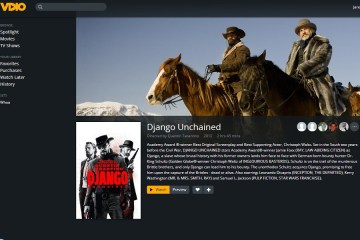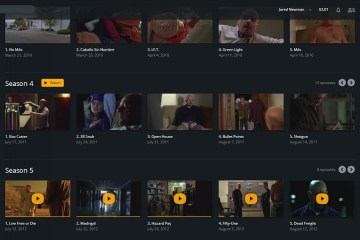I’ve made no secret of my love for Rdio (see Dear Rdio: I Like You. Please Don’t Die.), the streaming music service that competes with Spotify and, in my view, offers a slicker design and better features than its more established rival. But I’ve also worried that while Spotify ascends, Rdio could be yet another great music service bound for the scrap heap.
So imagine my dismay a few weeks ago when the folks behind Rdio announced a new streaming TV and movie service, dubbed Vdio. Unlike its musical sibling, Vdio isn’t subscription-based. It’s all a la carte, similar to iTunes’ video store. Its main hooks are the ability to connect with other Vdio users to see what they’re watching, and to build “Sets” of shows that are the equivalent of music playlists. (At the moment, it’s only available to existing Rdio subscribers.)

My concern was that this new video service would subtract from Rdio’s focus on music. But I figured I’d reserve judgment until I actually gave Vdio a try.
I finally got my chance this weekend, thanks to a $25 credit Vdio is offering to Rdio users–just enough money to catch up on season 5 of Breaking Bad. Sadly, this will probably be the last time I use Vdio. The service is troubled in so many ways that it’s hard to imagine anyone wanting to use it.
The problems began with the sign-up process. Right away, Vdio warns you that sharing your viewing activity is mandatory. I regret not getting a screen capture of this initial disclaimer, but the site’s sharing policy makes it clear:
IF YOU DO NOT CONSENT TO THE SHARING AND/OR PUBLIC DISPLAY OF YOUR VIEWING ACTIVITY, YOU MAY NOT BE ABLE TO VIEW THE VIDEO CONTENT THROUGH THE VDIO SERVICE.
In fairness, you can “protect” your account, preventing strangers from following you without permission. But this option is buried in the “Advanced” section of settings, and it’s disabled by default. Apparently, Rdio works the same way, and I hadn’t realized it. Sharing should be optional, not forced upon all users by default.
Undeterred by Vdio’s default creepiness, I went ahead and grabbed the latest eight episodes of Breaking Bad. But I noticed that Vdio lacks a standard-definition viewing option, which means all of its TV shows cost $3 and up, where as iTunes and Amazon have a $2 option if you don’t mind sacrificing picture quality.
Once you’ve purchased some shows, getting to them can be a bit of a hassle. Your library shows up in a “Purchases” folder, but clicking on a show from there takes you to a list of the entire series, not just the episodes you own. That means you have to wade through all the episodes you haven’t bought just to see the ones you did.

The viewing experience was fine, but ultimately it’s the same show you’d get by purchasing through Amazon, iTunes or another video store, except for one big difference: Vdio is only available through a web browser and the iPad for now. There are no apps for iPhone, Android, game consoles or set-top boxes (except Apple TV through Airplay). Rdio says it’s working on supporting more platforms in the future.
That’s what worries me. Rdio has plenty of its own development needs, including apps for Windows 8, game consoles and set-top boxes. Its Windows Phone app is sorely lacking in features compared to its Android and iOS counterparts, and its Android app isn’t optimized for tablets. While some music services, such as Pandora and Spotify, have hooked up with auto makers to integrate with car dashboards, Rdio hasn’t joined in. I worry that Vdio is hogging development resources, which wouldn’t be an issue if Vdio was really good.
But even Vdio’s most interesting feature, the ability to create and share playlists of videos to watch, isn’t really useful with an a la carte service, especially one where you can’t add your existing video library. Creating playlists in Vdio would burn a massive hole in your bank account; the idea is better-suited for subscription services like Netflix and Hulu.
I’ll be content with Vdio’s existence if it somehow helps save Rdio from obscurity, but it’s hard to see that happening in its current state. Now I’m just hoping the folks at Rdio can turn their new video service into something better, or drop it in favor of focusing on their music service instead.

